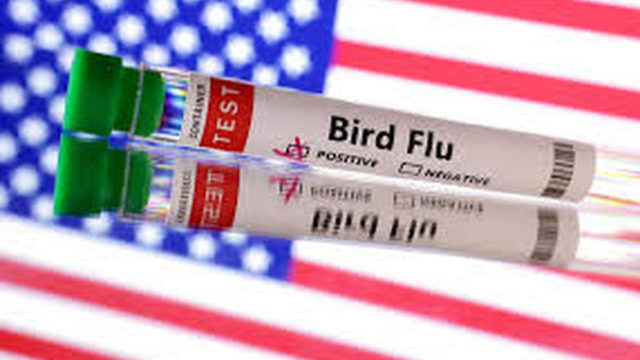November 19, 2025 : Health authorities in the United States have confirmed the first known human infection of the H5N5 subtype of avian influenza, marking a significant development in the ongoing global monitoring of bird flu strains. The infected individual, a Washington state resident, was hospitalized after developing severe respiratory symptoms and is currently receiving medical care. This is the first documented case of the H5N5 virus jumping from birds to humans in the U.S.
According to officials from the Washington State Department of Health and the Centers for Disease Control and Prevention (CDC), the patient is an older adult with underlying health conditions. They developed high fever, severe fatigue, and breathing difficulties before being admitted to the hospital. While the individual’s condition is being closely monitored, health officials have stated that there is no evidence of human-to-human transmission at this time.
Preliminary investigations suggest the patient may have contracted the virus through direct exposure to infected domestic birds on their property. Reports indicate that several backyard birds had died recently, and wild birds were known to frequent the area. This aligns with a growing trend where avian influenza strains spread through wild migratory birds, eventually reaching domestic flocks and creating spillover risks for humans.
The H5N5 strain, although lesser known compared to the widely discussed H5N1, has previously been detected in global bird populations but has seldom been associated with human infections. Scientists describe H5N5 as a highly pathogenic avian influenza (HPAI) strain that shares characteristics with other H5 viruses, including the potential to cause severe disease in poultry and the ability to mutate rapidly. The emergence of a human case, therefore, raises important questions about viral evolution, transmission, and surveillance gaps.
The CDC emphasized that while the detection of H5N5 in a human is concerning and warrants deeper investigation, the overall risk to the general public remains low. This assessment is based on the virus’s current behavior, limited transmissibility, and the absence of additional cases among close contacts of the patient. Nevertheless, public health teams are conducting extensive tracing and testing to rule out undetected spread.
This case comes amid increasing global attention to bird flu outbreaks affecting not only poultry but also cattle, wild mammals, and occasional human hosts. In the past two years, the U.S. has recorded multiple human cases of H5N1 bird flu, mostly among workers exposed to infected dairy cows or poultry. However, those infections were generally mild, involving conjunctivitis or short-term respiratory discomfort. The newly reported H5N5 case is notable because of the strain’s rarity in humans, the severity of illness observed, and its detection in a community rather than an agricultural workforce.
Health authorities say they are analyzing the genetic sequence of the H5N5 virus found in the patient to understand whether the virus has undergone mutations that could affect its transmissibility or severity. Genetic analysis will also help determine how closely related the human virus is to strains currently circulating in wild birds and poultry across the region. Such information is critical in evaluating whether H5N5 poses a broader pandemic threat.
Experts stress the importance of biosecurity measures, especially for individuals who keep backyard poultry. Simple precautions—such as avoiding contact with sick or dead birds, using protective gloves, washing hands properly, and keeping domestic flocks covered to avoid interaction with wild birds—can significantly reduce the risk of infection. Authorities also recommend that people report unusual bird deaths in their areas to local agricultural or wildlife officials.
The discovery of the first H5N5 human case is expected to intensify scientific research on avian influenza variants. Virologists and epidemiologists worldwide are already studying how climate change, migratory routes, and expanding poultry farms contribute to the rapid mixing and mutation of flu viruses. They warn that the more these viruses circulate in bird populations, the greater the chances of a spillover into humans.
Public health specialists argue that this latest case underscores the need for robust, ongoing surveillance. They are urging federal agencies to expand monitoring efforts in poultry farms, backyard bird settings, wildlife habitats, and healthcare facilities. Improved early detection systems could help scientists respond sooner to unusual infections and prevent widespread outbreaks.
Despite the seriousness of the situation, officials urge the public not to panic. The CDC reiterates that this appears to be an isolated case, linked to specific exposure conditions. Human infection with H5N5 remains extremely rare, and there is currently no sign that the virus has developed the ability to spread efficiently between people.
Still, the incident serves as a reminder of the unpredictable nature of influenza viruses. As one health expert commented, “Every spillover event is a warning. The virus is experimenting in nature, and we have to stay one step ahead.” For now, the priority remains understanding how the patient was exposed, containing any potential spread, and ensuring the individual receives the care required for recovery.
Summary
The U.S. has reported its first human case of H5N5 bird flu in a Washington resident. Officials say the risk to the public remains low, with no evidence of human-to-human transmission.


